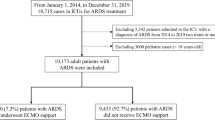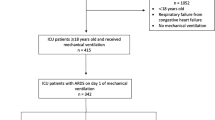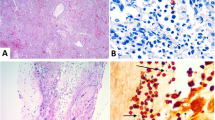Abstract
Objective
Examine changing neonatal respiratory extracorporeal membrane oxygenation (ECMO) practice trends and outcomes.
Study design
Retrospective cohort study comparing neonatal respiratory ECMO in the 1990 and 2010 decades (1994–1995 and 2014–2015). Patients ≤ 30 days of life, reported to the Extracorporeal Life Support Organization registry, were included.
Results
Four thousand one hundred and twenty-five patients met inclusion criteria. ECMO cases decreased by 33%. The primary ECMO diagnosis changed significantly over time (p < 0.0001). Survival to discharge decreased (76 vs 67%, p < 0.0001) and ECMO duration increased (131 vs 158 h, p < 0.001). Lung recovery was the most common reason to discontinue ECMO although family request for withdrawal and a diagnosis considered “incompatible with life” was increasingly common in the 2010s.
Conclusion
Although the use of ECMO for neonatal respiratory diagnoses has decreased over time, its use has increased for patients with more complex diagnoses and ECMO duration is longer. ECMO continues to be an important supportive therapy, improved understanding of which patients would benefit most is needed.
This is a preview of subscription content, access via your institution
Access options
Subscribe to this journal
Receive 12 print issues and online access
$259.00 per year
only $21.58 per issue
Buy this article
- Purchase on Springer Link
- Instant access to full article PDF
Prices may be subject to local taxes which are calculated during checkout
Similar content being viewed by others
References
Bartlett RH, Gazzaniga AB, Jefferies MR, Huxtable RF, Haiduc NJ, Fong SW. Extracorporeal membrane oxygenation (ECMO) cardiopulmonary support in infancy. Trans Am Soc Artif Intern Organs. 1976;22:80–93.
Chapman RL, Peterec SM, Bizzarro MJ, Mercurio MR. Patient selection for neonatal extracorporeal membrane oxygenation: beyond severity of illness. J Perinatol. 2009;29:606–11.
Bartlett RH, Roloff DW, Cornell RG, Andrews AF, Dillon PW, Zwischenberger JB. Extracorporeal circulation in neonatal respiratory failure: a prospective randomized study. Pediatrics. 1985;76:479–87.
O’Rourke PP, Crone RK, Vacanti JP, Ware JH, Lillehei CW, Parad RB, et al. Extracorporeal membrane oxygenation and conventional medical therapy in neonates with persistent pulmonary hypertension of the newborn: a prospective randomized study. Pediatrics. 1989;84:957–63.
UK Collaborative ECMO Trial Group. UK collaborative randomised trial of neonatal extracorporeal membrane oxygenation. Lancet. 1996;348:75–82.
Bartlett RH, Gazzaniga AB, Toomasian J, Coran AG, Roloff D, Rucker R, et al. Extracorporeal membrane oxygenation (ECMO) in neonatal respiratory failure. 100 cases. Ann Surg. 1986;204:236–45.
Kirkpatrick BV, Krummel TM, Mueller DG, Ormazabal MA, Greenfield LJ, Salzberg AM. Use of extracorporeal membrane oxygenation for respiratory failure in term infants. Pediatrics. 1983;72:872–6.
Cilley RE, Zwischenberger JB, Andrews AF, Bowerman RA, Roloff DW, Bartlett RH. Intracranial hemorrhage during extracorporeal membrane oxygenation in neonates. Pediatrics. 1986;78:699–704.
Fletcher K, Chapman R, Keene S. An overview of medical ECMO for neonates. Semin Perinatol. 2018;42:68–79.
Brogan TV, Lequier L, Lorusso R, MacLaren G, Peek G. Extracorporeal Life Support: The ELSO Red Book. 5th Edition. Extracorporeal Life Support Organization: Ann Arbor, Michigan, 2017.
Kanto WP. A decade of experience with neonatal extracorporeal membrane oxygenation. J Pediatr. 1994;124:335–47.
Andrews AF, Nixon CA, Cilley RE, Roloff DW, Bartlett RH. One- to three-year outcome for 14 neonatal survivors of extracorporeal membrane oxygenation. Pediatrics. 1986;78:692–8.
UK Collaborative ECMO Group. The collaborative UK ECMO (extracorporeal membrane oxygenation) trial: Follow-up to 1 year of age. Pediatrics. 1998, 101:E1.
Bahrami KR, Van Meurs KP. ECMO for neonatal respiratory failure. Semin Perinatol. 2005;29:15–23.
Christou H, Van Marter LJ, Wessel DL, Allred EN, Kane JW, Thompson JE, et al. Inhaled nitric oxide reduces the need for extracorporeal membrane oxygenation in infants with persistent pulmonary hypertension of the newborn. Crit Care Med. 2000;28:3722–7.
Agarwal P, Altinok D, Desai J, Shanti C, Natarajan G. In-hospital outcomes of neonates with hypoxic-ischemic encephalopathy receiving extracorporeal membrane oxygenation. J Perinatol. 2019;39:661–5.
Lequier L, Horton SB, McMullan DM, Bartlett RH. Extracorporeal membrane oxygenation circuitry. Pediatr Crit Care Med. 2013;14:S7–12.
Hintz SR, Suttner DM, Sheehan AM, Rhine WD, Van Meurs KP. Decreased use of neonatal extracorporeal membrane oxygenation (ECMO): how new treatment modalities have affected ECMO utilization. Pediatrics. 2000;106:1339–43.
Clark RH, Kueser TJ, Walker MW, Southgate WM, Huckaby JL, Perez JA, et al. Low-dose nitric oxide therapy for persistent pulmonary hypertension of the newborn. Clinical Inhaled Nitric Oxide Research Group. N Engl J Med. 2000;342:469–74.
The Neonatal Inhaled Nitric Oxide Study Group (NINOS Inhaled nitric oxide and hypoxic respiratory failure in infants with congenital diaphragmatic hernia. Pediatrics. 1997;99:838–45.
Steinhorn RH. Advances in neonatal pulmonary hypertension. Neonatology. 2016;109:334–44.
Konduri GG, Sokol GM, Van Meurs KP, Singer J, Ambalavanan N, Lee T, et al. Impact of early surfactant and inhaled nitric oxide therapies on outcomes in term/late preterm neonates with moderate hypoxic respiratory failure. J Perinatol. 2013;33:944–9.
Findlay RD, Taeusch HW, Walther FJ. Surfactant replacement therapy for meconium aspiration syndrome. Pediatrics. 1996;97:48–52.
Lotze A, Mitchell BR, Bulas DI, Zola EM, Shalwitz RA, Gunkel JH. Multicenter study of surfactant (beractant) use in the treatment of term infants with severe respiratory failure. Survanta in Term Infants Study Group. J Pediatr. 1998;132:40–7.
Bohn D. Congenital diaphragmatic hernia. Am J Respir Crit Care Med. 2002;166:911–5.
Yoder BA, Kirsch EA, Barth WH, Gordon MC. Changing obstetric practices associated with decreasing incidence of meconium aspiration syndrome. Obstet Gynecol. 2002;99:731–9.
Roy BJ, Rycus P, Conrad SA, Clark RH. The changing demographics of neonatal extracorporeal membrane oxygenation patients reported to the Extracorporeal Life Support Organization (ELSO) Registry. Pediatrics. 2000;106:1334–8.
Mahmood B, Newton D, Pallotto EK. Current trends in neonatal ECMO. Semin Perinatol. 2018;42:80–8.
Schrag S, Gorwitz R, Fultz-Butts K, Schuchat A. Prevention of perinatal group B streptococcal disease. Revised guidelines from CDC. MMWR Recomm Rep. 2002;51:1–22 6.
Van Dyke MK, Phares CR, Lynfield R, Thomas AR, Arnold KE, Craig AS, et al. Evaluation of universal antenatal screening for group B streptococcus. N Engl J Med. 2009;360:2626–36.
Reiterer F, Resch E, Haim M, Maurer-Fellbaum U, Riccabona M, Zobel G, et al. Neonatal extracorporeal membrane oxygenation due to respiratory failure: a single center experience over 28 years. Front Pediatr. 2018;6:263.
Carpenter JL, Yu YR, Cass DL, Olutoye OO, Thomas JA, Burgman C, et al. Use of venovenous ECMO for neonatal and pediatric ECMO: a decade of experience at a tertiary children’s hospital. Pediatr Surg Int. 2018;34:263–8.
Pallotto I, Lantos JD. Treatment decisions for babies with trisomy 13 and 18. HEC Forum. 2017;29:213–22.
Janvier A, Farlow B, Barrington K. Cardiac surgery for children with trisomies 13 and 18: where are we now? Semin Perinatol. 2016;40:254–60.
Weiner J, Sharma J, Lantos J, Kilbride H. How infants die in the neonatal intensive care unit: trends from 1999 through 2008. Arch Pediatr Adolesc Med. 2011;165:630–4.
Merrill ED, Schoeneberg L, Sandesara P, Molitor-Kirsch E, O’Brien J, Dai H, et al. Outcomes after prolonged extracorporeal membrane oxygenation support in children with cardiac disease—Extracorporeal Life Support Organization registry study. J Thorac Cardiovasc Surg. 2014;148:582–8.
Gupta P, Robertson MJ, Beam B, Gossett JM, Schmitz ML, Carroll CL, et al. Relationship of ECMO duration with outcomes after pediatric cardiac surgery: a multi-institutional analysis. Minerva Anestesiol. 2015;81:619–27.
Kays DW, Islam S, Richards DS, Larson SD, Perkins JM, Talbert JL. Extracorporeal life support in patients with congenital diaphragmatic hernia: how long should we treat? J Am Coll Surg. 2014;218:808–17.
Na SJ, Jung JS, Hong SB, Cho WH, Lee SM, Cho YJ, et al. Clinical outcomes of patients receiving prolonged extracorporeal membrane oxygenation for respiratory support. Ther Adv Respir Dis. 2019;13:1753466619848941.
Prodhan P, Stroud M, El-Hassan N, Peeples S, Rycus P, Brogan TV, et al. Prolonged extracorporeal membrane oxygenator support among neonates with acute respiratory failure: a review of the Extracorporeal Life Support Organization registry. ASAIO J. 2014;60:63–9.
Ares GJ, Buonpane C, Helenowski I, Reynolds M, Hunter CJ. Outcomes and associated ethical considerations of long-run pediatric ECMO at a single center institution. Pediatr Surg Int. 2019;35:321–8.
Brogan TV, Zabrocki L, Thiagarajan RR, Rycus PT, Bratton SL. Prolonged extracorporeal membrane oxygenation for children with respiratory failure. Pediatr Crit Care Med. 2012;13:e249–54.
Schmidt M, Bréchot N, Hariri S, Guiguet M, Luyt CE, Makri R, et al. Nosocomial infections in adult cardiogenic shock patients supported by venoarterial extracorporeal membrane oxygenation. Clin Infect Dis. 2012;55:1633–41.
Omar HR, Mirsaeidi M, Mangar D, Camporesi EM. Duration of ECMO is an independent predictor of intracranial hemorrhage occurring during ECMO support. ASAIO J. 2016;62:634–6.
MacLaren G. When to initiate ECMO with low likelihood of success. Crit Care. 2018;22:217.
Parga, JJ, Garg, M. Extracorporeal membrane oxygenation in neonates: history and future directions. NeoReviews. 2017;18:e166–72.
Acknowledgements
Authors acknowledge ECMO Registry of Extracorporeal Life Support Organization (ELSO), Ann Arbor, Michigan for providing the patient data for the study and Kayla Seever for assistance with paper preparation.0-159/00044489509:3.
Author information
Authors and Affiliations
Corresponding author
Ethics declarations
Conflict of interest
The authors declare that they have no conflict of interest.
Additional information
Publisher’s note Springer Nature remains neutral with regard to jurisdictional claims in published maps and institutional affiliations.
Rights and permissions
About this article
Cite this article
Sharma, J., Sherman, A., Rimal, A. et al. Neonatal respiratory extracorporeal membrane oxygenation and primary diagnosis: trends between two decades. J Perinatol 40, 269–274 (2020). https://doi.org/10.1038/s41372-019-0547-y
Received:
Revised:
Accepted:
Published:
Issue Date:
DOI: https://doi.org/10.1038/s41372-019-0547-y
This article is cited by
-
Neonatal respiratory and cardiac ECMO in Europe
European Journal of Pediatrics (2021)



